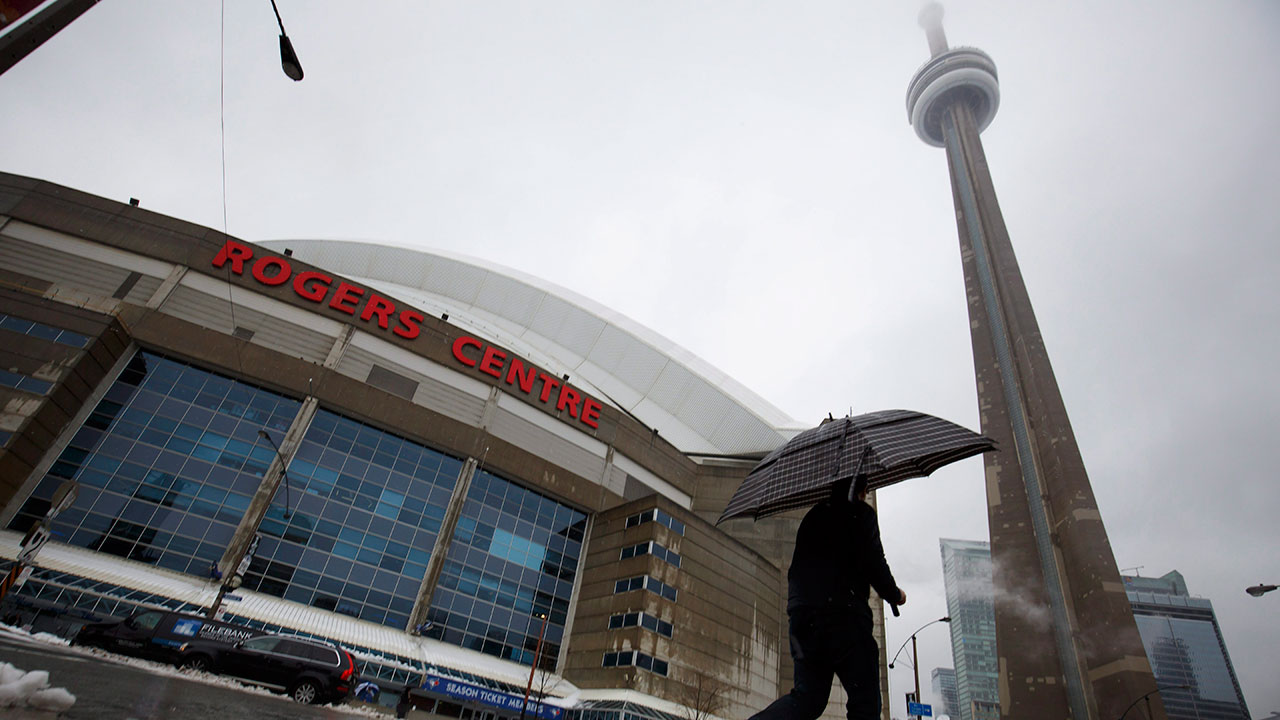TORONTO – The Rogers Centre, nee SkyDome, at age 30 is more relic than marvel, the revolutionary nature of its four-panelled, retractable roof peaking at 282 feet above the ground now seen more as a run-of-the-mill convenience, one topping a stadium from a bygone era.
Now the seventh-oldest facility in Major League Baseball – only Fenway Park in Boston, Wrigley Field in Chicago, Dodger Stadium in Los Angeles, Angel Stadium in Anaheim, Oakland Coliseum and Kauffman Stadium in Kansas City are older – the dome was both the first and last of its kind.
Five other stadiums have been built since with retractable roofs, with a sixth set to open next year when the Texas Rangers move into new digs across the street from their current home. Yet Rogers Centre was the last park in the majors designed to be a multipurpose facility, the 1992 opening of the retro-themed Camden Yards in Baltimore changing perceptions around the game of what a baseball stadium really should be.
[snippet id=4545751]
Every stadium to subsequently open took some of the best elements of Rogers Centre – the rings of revenue-generating private boxes, the restaurants and bar overlooking the field, the gargantuan video scoreboard, to name a few – and stuffed them into venues based on classic parks of the past.
That transition has eroded much of the dome’s lustre over the years which irks Paul Beeston, the Toronto Blue Jays’ president emeritus who ran the club when SkyDome first opened on June 5, 1989.
“It does, there’s no question about that,” he said in an interview. “There were some new stadiums built with nuances that new stadiums always have that make them a little more charming as baseball-only facilities. Remember, this was built as a multi-purpose stadium … but it was one-of-a-kind at the time. It was Astrodome-ish but their roof didn’t open.
“There was this fascination with it across baseball – does this roof work, is this stadium going to be as special and spectacular as we see it to be? People wanted to see all the things it could do.”
Now, however, the tendency is to see the place more for what it isn’t, as not only have the trends in stadium design changed, but so too have the people frequenting games. During an April 2018 visit, commissioner Rob Manfred raised eyebrows when he made the phrase “millennial areas” part of the local lexicon, but the underlying point was about the need to make the dome experience more appealing to a younger generation of fans.
He also stressed that the place “needs an update to make it as economically viable as possible,” and a wide-scale refurbishment was a priority for president and CEO Mark Shapiro when he took over in November 2015.
What would that look like?
In a 2017 interview, Shapiro said the goal was “to turn the stadium into a ballpark. Very simply that would be a top priority for us, which means provide a modern ballpark experience for our fans.”
By the spring of 2018, momentum appeared to have slowed, even as Shapiro said in a subsequent interview that “there’s an understanding from Rogers ownership top to bottom, there’s an appreciation of the need (to renovate) as well as an understanding that’s probably one of the biggest levers if not the biggest lever on the Blue Jays business model moving forward.”
Later that summer, there was speculation that a Rogers Centre renovation could be tied to the city’s goal of developing a rail-deck park on grounds adjacent to the dome but all that appears stuck in the mud at the moment.
As Beeston, noted: “Could you improve (the dome)? Yeah. But I don’t think at the present time that’s in the offing.”
[relatedlinks]
The Rogers Centre sits on Canada Lands Company property zoned for stadium use only on a 99-year lease that runs through 2088.
So until the Blue Jays find the money for a wide-scale refurbishment, they’re left to make incremental improvements to the fan experience – better concessions, modernized signage, a fancy new lounge behind home plate where the old press box used to be – while taking care of structural needs such as waterproofing and relining the roof.
All of which makes all that it still offers so easy to forget.
“The location is as key to it as anything else,” said Beeston. “It’s downtown, in an area which is getting more and more vibrant as we go. The stadium works, I think the improvements they’ve made will make it acceptable for us. What you’ve got to remember is, which I don’t think anybody anticipated, the season starts in March. I don’t want to get into global warming and climate change because I’m not that smart. But what we saw in April and May, what we would do without this roof? We played our games and we played them on time. It’s not Camden Yards, it’s not Oracle Park, it’s not PNC Park but it works for us and it works for the city.”
Thirty years on, there’s no alternative even if it did not.










